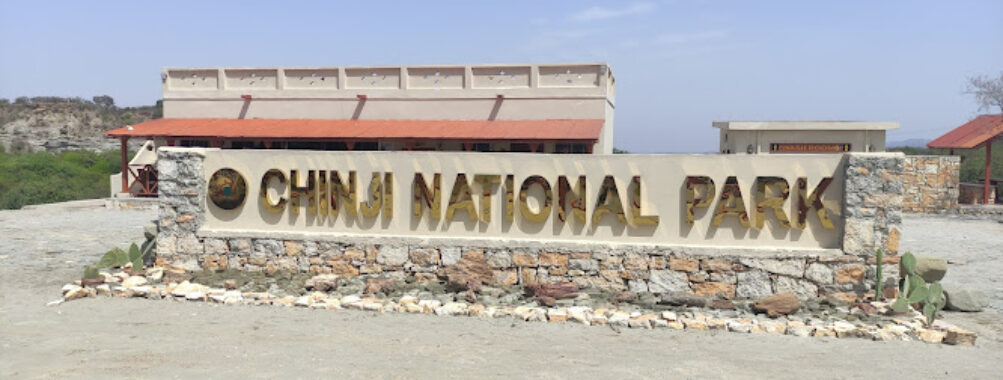
Chinji National Park
Table of Contents
Description
Chinji National Park, tucked away in the Salt Range of Punjab’s Talagang District, is one of those places that quietly surprises you. It’s not the sort of park that shouts for attention with flashy attractions or overdeveloped facilities. Instead, it wins you over slowly—with its dry, rugged hills, clusters of subtropical vegetation, and that quiet sense of space you only find in places where nature still calls the shots. The park covers over 6,000 hectares, which sounds massive until you’re standing on a ridge, looking out over the dusty folds of land stretching into the horizon. It’s the kind of view that makes you pause, even if you’re not the “stop and stare” type.
For travelers who like to lace up their boots and just wander, the park’s hiking trails are a real treat. They’re not manicured paths—you’ll find loose gravel, sudden inclines, and the occasional goat blocking your way—but that’s part of the charm. And if you’re into birdwatching, you’ll be in good company here. The cliffs and sparse woodlands are home to both resident and migratory species, and you might just spot one of those rare raptors circling overhead. It’s also a surprisingly good spot for families, with gentler trails where kids can roam without too much worry, though you’ll still want to keep an eye on them near the steeper drops.
That said, it’s not perfect. Some visitors find the facilities basic—there’s no fancy café or visitor center, and you’ll need to bring cash for any small purchases or entry fees. And yes, the terrain can be unforgiving in the heat, so if you’re expecting manicured lawns and shaded picnic spots, you might be disappointed. But if you’re after a place that feels raw, authentic, and just a bit wild, Chinji delivers in spades. Personally, I’d take that over a polished tourist park any day.
Key Features
- Expansive 6,095-hectare protected area in the Salt Range
- Subtropical vegetation with unique xeric woodland ecosystem
- Popular hiking trails ranging from easy to challenging
- Important bird conservation area with resident and migratory species
- Cliffs, dry forests, and seasonal water sources
- Kid-friendly hiking options available
- Cash-only transactions—no card facilities
- Unspoiled landscapes with minimal commercial development
Best Time to Visit
If you ask me, late autumn through early spring is when Chinji National Park really shines. The heat backs off, the air gets that crisp edge in the mornings, and the light turns golden in a way that makes even the scrubby bushes look photogenic. Winter days here are cool enough for long hikes without feeling like you’re melting, though nights can get chilly—bring layers if you’re camping. Summer, on the other hand, is a different beast. The dry heat can be brutal, and unless you’re used to trekking in 40°C weather, it’s probably best avoided. Monsoon season offers a brief burst of green, but the trails can get slippery and less accessible, so plan accordingly.
How to Get There
Reaching Chinji National Park is fairly straightforward if you’ve got your own wheels. It sits along the Sargodha Road in Talagang Tehsil, making it about a two-hour drive from Islamabad under normal traffic. The route takes you past rolling farmland and into the rocky rise of the Salt Range—keep your camera handy, because the scenery changes fast. Public transport is trickier; you might find local buses heading in the general direction, but they won’t drop you at the park gate. Honestly, if you can rent a car or hire a driver, you’ll save yourself a lot of hassle. And remember, there’s not much in the way of big fuel stations nearby, so fill up before you go.
Tips for Visiting
First and foremost: bring water. Lots of it. The dry climate will sneak up on you, and there’s no guarantee you’ll find a shop inside the park. Wear sturdy shoes—those trails can chew up flimsy sneakers in no time. If you’re into photography, mornings and late afternoons give you the best light, and the cliffs look especially dramatic when the shadows stretch across the valleys. For families, stick to the more accessible trails; they’re still scenic without the risk of scrambling over loose rock. Birdwatchers should bring binoculars and a bit of patience—some of the rarer species only show themselves after you’ve been still for a while.
Also, don’t expect a polished tourist setup. That’s part of the appeal, but it means you need to be self-sufficient. Pack snacks, bring cash, and maybe even a small first-aid kit. And if you’re the kind of person who likes to wander off trail, keep an eye on the horizon—these hills can start to look the same after a while, and you don’t want to be that person asking for directions back to the gate. Lastly, respect the place. It’s a living ecosystem, not an outdoor theme park, and leaving it as you found it means the next traveler gets to enjoy the same wild beauty you did.
Location
Places to Stay Near Chinji National Park
Find and Book a Tour
Explore More Travel Guides
No reviews found! Be the first to review!